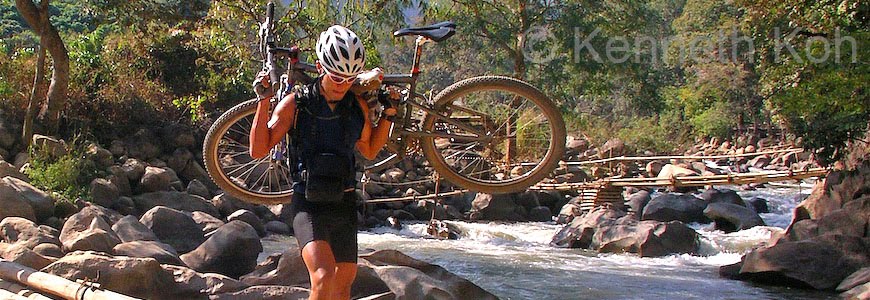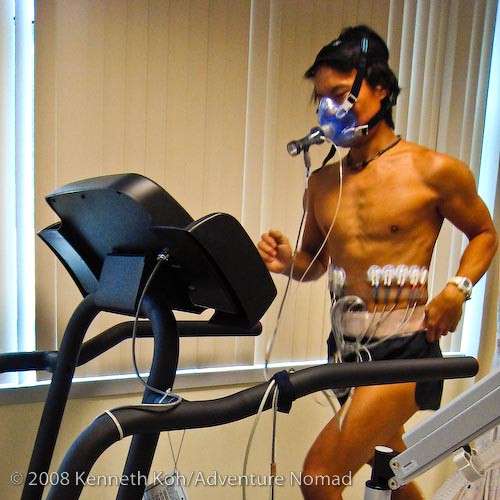Approaching the summit of Mt. Rinjani at dawn. Nikon D300, 10.5mm.
Trekking Mt. Rinjani isn't for the faint of heart. The volcano is active, and although the last significant eruption occurred a year ago on May 10th 2009, smaller eruptions occurred every 4-5 hours during our trek there last week.
Me, standing on the crater rim as we begin our pre-dawn climb to the summit. Photo © Laura Liong. Canon 7D, 15-85mm.
Mt. Rinjani is 3726m tall and is located on the island of Lombok, Indonesia. Trekking information is hard to come by, and is usually out of date. The best time to go is during the cool and dry season from May to October. If you are trekking down into the rim (ie. down to the crater lake), you'll take your chances during the wet season as the trail is pretty rugged.
What's a climb without a summit photo? Laura and I on the summit of Mt. Rinjani.
The trek is guided, and porters will carry the camping gear, food and water. If required, you can also arrange for a porter to carry your personal belongings.
Chilling in the hot springs after coming down from the summit. Nikon D300, 10.5mm.
We did the 4-day trekking option, starting from Sembalun Lawang. The first day was relatively easy, starting out at Semlabun Lawang (1156m) and making our way up the grassy slopes to our camp on the East crater rim. Our second day was long. It began with a pre-dawn start from our campsite on the crater rim, to the summit and down into the crater to camp at the lake shore, where we enjoyed a soak in the nearby hot springs.
Thar She Blows! An eruption early in the morning. Nikon D300, 16-85mm.
The mornings are usually the best time for views, as the clouds tend to roll in by late morning, obscuring the views. Our third morning began with a thoroughly enjoyable walk along the shore of Danau Segara Anak (Child of the Sea Lake), with great views of the volcanic cone, Gunung Baru Jari, and made our way up the West crater rim. The volcano is active, and erupted every 4-5 hours during our trek. This forced us to wear masks which filter out volcanic ash which would rain down following each eruption.
Volcanic ash covers our tent in the morning.
Our fourth day was flexible, depending on how far we got on day three. In truth, we probably could have made another long day and walked all the way out on day 3, but we chose to spend our last night in the jungle and had a short walk out to Senaru.
Trekking along the shore of Danau Segara Anak with the active volcanic cone behind. Nikon D300, 16-85mm.
The rim-summit-lake-rim (Senaru to Sembalun or vice versa) trail described in here is probably best suited to the experienced trekker or the adventurous traveler. It is a rewarding experience with fantastic scenery, but visitors will have to put up with the sorry state and significant trash at the campsites and rest stops.
More pictures on Flickr.









